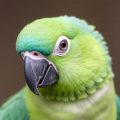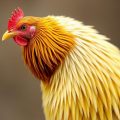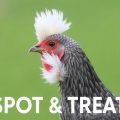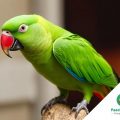Содержание
- What is Candida? A simple picture
- Why parrots are susceptible
- Where Candida shows up: types of infections
- Signs and symptoms to watch for
- Common causes and risk factors
- How veterinarians diagnose Candida
- Treatment options: what to expect
- Medications to know about (overview table)
- Home care: what owners can do safely
- Nutrition and probiotics: balancing the gut
- Prevention strategies
- Special considerations by age and species
- Common mistakes owners make
- When to seek immediate veterinary care
- How to work with your veterinarian
- Case examples (typical scenarios)
- Complications and prognosis
- Research and future directions
- Quick-reference summary table
- A simple action plan for owners
- Myths and misconceptions
- Resources and further reading
- Conclusion
SQLITE NOT INSTALLED
Parrots are talkative, affectionate, and endlessly curious, but they can also be quietly vulnerable to infections that don’t announce themselves loudly. Candida yeast infections in parrots are one of those stealthy problems: often hidden in the mouth, crop, or intestines, sometimes mistaken for simple crop stasis or respiratory trouble, and frequently made worse by diet, antibiotics, or stress. If you share your life with a parrot, understanding how Candida behaves, how to spot it early, and how to work with a veterinarian to treat and prevent it can make the difference between a short, manageable illness and a long, frustrating decline.
This article will walk you through Candida yeast infections in parrots in a straightforward, conversational way. I’ll explain what Candida is, how it shows up in different parts of a parrot’s body, common causes and risk factors, how a veterinarian diagnoses the problem, realistic treatment options, and practical husbandry changes you can make at home. I’ll also include useful tables and step-by-step lists so you can quickly find the information you need when you suspect something is wrong. Whether you’re a new bird owner or a seasoned parrot parent, this guide will help you protect your feathered friend from a common but treatable enemy.
What is Candida? A simple picture
Candida is a genus of yeast—single-celled fungi—that lives naturally on the mucous membranes of many animals, including humans and birds. In small numbers, Candida is often harmless and part of the normal microbial community. But when the balance of microbes is disrupted or a bird’s immune system is weakened, Candida can overgrow and cause disease. That overgrowth is what people usually call a yeast infection or candidiasis.
There are several species of Candida; Candida albicans is the most widely known in people, but other Candida species can play a role in birds. Candida yeast infections in parrots most commonly affect the mouth and crop (oral candidiasis and crop candidiasis), though the yeast can also colonize the intestines and, in rare cases, become systemic (spreading internally)—the latter is a very serious condition.
Why parrots are susceptible
Parrots have some unique characteristics that can make them more prone to Candida overgrowth than other pets. Their diets, often high in fruits and seeds, can provide sugars that encourage yeast growth. Their social and exploratory behaviors cause them to pick up microbes from the environment. And certain management practices—especially inappropriate or prolonged use of antibiotics, poor hygiene, inadequate diet, stress, and immune-suppressing illnesses—can tip the balance in favor of Candida.
Young birds and chicks are particularly vulnerable because their immune systems are still developing. Birds that are elderly, chronically ill, or under significant stress (from weaning, moving, breeding, or environmental changes) are also at higher risk. Recognizing these vulnerabilities helps you minimize the opportunities for Candida yeast infections in parrots to take hold.
Where Candida shows up: types of infections
Candida can present in several ways in parrots. Understanding where the infection is located helps you spot the signs and discuss targeted treatment with your veterinarian.
Oral candidiasis
Oral candidiasis affects the mouth and throat. You may notice white or yellowish plaques on the tongue, roof of the mouth, or inside the cheeks, bad breath, drooling, difficulty swallowing, or reduced appetite. Birds with oral involvement may be reluctant to preen, and they may be less vocal.
Crop candidiasis (thrush of the crop)
The crop is an expandable pouch where a bird stores and softens food. Candida overgrowth here—crop candidiasis—is common because the crop can trap food residues and support yeast if conditions are right. Symptoms include a flaccid or enlarged crop, regurgitation, foul-smelling crop contents, mass of whitish material, reduced appetite, weight loss, and sometimes delayed crop emptying.
Gastrointestinal candidiasis
When Candida colonizes further down the digestive tract, symptoms may be less specific: persistent diarrhea, soft stools, weight loss, poor feather condition, and fluctuating appetite. Because these signs are shared with many other GI diseases, lab testing is often necessary to confirm Candida.
Systemic candidiasis
Systemic infection—where Candida spreads beyond mucous membranes into deeper tissues—is rare but serious. It can occur in severely immunocompromised birds or as a complication of invasive procedures. Signs depend on the organs involved and can include severe lethargy, dramatic weight loss, difficulty breathing, and multi-organ dysfunction. Prompt veterinary care is critical.
Signs and symptoms to watch for
Candida yeast infections in parrots can have overlapping signs with other diseases, so vigilance is key. Here are common signs organized for quick scanning:
- White or yellow plaques in the mouth, beak, or throat
- Pearly or cottage-cheese-like material in the crop
- Bad breath (halitosis)
- Regurgitation, vomiting, or recurrent crop stasis
- Reduced appetite or picky eating
- Weight loss and poor body condition
- Diarrhea or soft stools
- Feather plucking or poor feather quality
- Increased thirst and changes in drinking behavior
- Respiratory signs if infection extends or is systemic
Finding one or two of these signs doesn’t automatically mean Candida; they do, however, warrant veterinary assessment, especially if they’re persistent, worsening, or combined.
Common causes and risk factors
Candida is opportunistic. It becomes a problem when normal defenses break down or the environment favors yeast growth. Common contributors include:
- Antibiotic therapy that disrupts beneficial bacteria and allows yeast to proliferate
- High-sugar diets (excessive fruits, honeyed treats, or sugary pellets/treats)
- Poor hygiene of feeding utensils, formula, or crop syringes (critical in hand-feeding)
- Stress: shipping, weaning, breeding, environmental changes
- Immune suppression: chronic illness, corticosteroid therapy
- Improper formula or contaminated formula in chicks
- Acid–base or motility disturbances of the crop (slow emptying)
- Age extremes: very young and very old birds
Understanding which risk factors apply to your bird helps you target prevention and management strategies.
How veterinarians diagnose Candida
Because symptoms can mimic other conditions, a veterinary diagnosis is essential. Typical diagnostic steps include:
- Full physical exam under appropriate restraint or sedation
- Oral and crop inspection with gentle swabs
- Cytology: examining swab material or crop aspirates under the microscope to look for yeast forms and supportive inflammatory cells
- Culture: growing the organism to identify Candida species and, if available, to test antifungal susceptibility
- Molecular diagnostics: PCR testing in some reference labs for species identification
- Imaging: radiographs to evaluate crop size, aspiration risk, or systemic complications
- Bloodwork: to assess hydration, organ function, and immune status
A combination of clinical signs plus cytology/culture usually confirms candidiasis. Cultures can help determine whether a resistant Candida strain is present, which affects treatment choices.
Treatment options: what to expect
Treating Candida yeast infections in parrots requires a multi-pronged approach: antifungal therapy, supportive care (nutrition, hydration), and addressing underlying causes. Here’s what typically happens:
Antifungal medications
Veterinarians choose antifungal agents based on infection location, severity, species of Candida (if known), and the bird’s overall health. Common antifungal drugs used in birds include nystatin (often for oral and crop infections due to minimal absorption), azoles such as fluconazole and itraconazole, and sometimes topical antifungals for localized lesions. The medication, route, and duration must be decided by a veterinarian—the same dose that works in one species or individual may be ineffective or unsafe in another.
It’s important to complete the full course prescribed, even if clinical signs improve quickly. Stopping early can lead to relapse and encourage resistance.
Crop management and supportive care
Supportive measures are just as important as medication:
- Crop flushes or gentle cleaning of crop contents under vet guidance to remove thick, infected material
- Ensuring adequate hydration and offering easy-to-digest, low-sugar foods
- Hand-feeding protocol review for chicks: fresh formula, sterile equipment, correct temperature
- Addressing concurrent problems such as motility disorders or bacterial overgrowth
- Probiotics may be recommended to help restore a healthy gut microflora, though the evidence in birds is mixed
When hospitalization is needed
Severely affected birds, chicks with crop infections, or those at risk of aspiration may require hospitalization for IV fluids, assisted feeding, crop care, and monitoring. Systemic candidiasis or birds showing signs of multi-organ disease will need intensive veterinary intervention.
Medications to know about (overview table)
| Drug | Typical use in parrots | Route | Notes |
|---|---|---|---|
| Nystatin | Superficial oral and crop infections | Oral/topical | Poorly absorbed systemically—useful for mucosal disease; minimal systemic side effects |
| Fluconazole (azole) | Oral/systemic candidiasis | Oral | Good oral bioavailability; often used for oral and systemic infections; dosing must be vet-determined |
| Itraconazole (azole) | Systemic or refractory infections | Oral | Useful for some fungal infections but can have drug interactions and organ toxicity risks—veterinary monitoring recommended |
| Topical antifungals | Localized lesions | Topical application | May be useful in conjunction with systemic therapy for pronounced mucosal plaques |
Note: This table is an overview and not a treatment plan. Only a licensed veterinarian should prescribe medication and dosage for your parrot.
Home care: what owners can do safely
When your parrot has confirmed or suspected Candida, you can take several practical steps at home, alongside veterinary treatment, to speed recovery and prevent spread:
- Follow the prescribed medication schedule exactly and bring the bird for follow-up exams as recommended.
- Keep feeding utensils, bowls, and any syringes or hand-feeding equipment scrupulously clean—sterilize or replace contaminated items.
- Offer a bland, easy-to-digest diet that’s low in simple sugars until the infection resolves. Avoid fruit-heavy meals and sugary treats.
- Monitor crop function: feel the crop at regular intervals to ensure it empties appropriately (your vet can show you how).
- Avoid using antibiotics unless a vet prescribes them and there is a clear bacterial infection; unnecessary antibiotics are a major cause of yeast overgrowth.
- Reduce stressors in the environment: keep a stable routine, provide quiet rest, and avoid sudden household upheavals.
- Consider a probiotic or prebiotic only if your veterinarian approves, and use species-appropriate products when available.
Nutrition and probiotics: balancing the gut
Diet plays a powerful role in microbial balance. A high-sugar diet can feed Candida, so emphasizing balanced nutrition with appropriate protein, healthy fats, and complex carbohydrates can help restore mucosal defenses. For chicks, meticulous hygiene and correct formula preparation are crucial—contaminated or improperly stored formula is a common source of crop infections in hand-reared birds.
Probiotics are often suggested to restore beneficial bacteria after antibiotics or infections. Some avian vets recommend species-specific probiotic products; others use human products with caution. Evidence in birds is still evolving, so treat probiotics as a supportive measure rather than a cure, and only use them under veterinary guidance.
Prevention strategies
Preventing Candida yeast infections in parrots is largely about reducing risk factors and supporting the bird’s natural defenses. Practical prevention strategies include:
- Use antibiotics judiciously—only when a veterinarian prescribes them and for the full indicated course.
- Keep feeding equipment, perches, toys, and cage surfaces clean and dry.
- Provide a balanced, species-appropriate diet; avoid excessive sugary treats.
- Improve environmental quality: adequate ventilation, appropriate temperature/humidity, and minimal stressors.
- Ensure proper hand-feeding technique for chicks: clean utensils, correct formula temperature, and prompt disposal of leftover formula.
- Regular veterinary wellness checks to catch subtle changes early.
These measures reduce the chance that Candida will go from being a harmless commensal to a problem-causing pathogen.
Special considerations by age and species
Not all parrots are the same. Species differences in diet, behavior, and anatomy can affect susceptibility and treatment response. For example, large hookbills and cockatoos may tolerate certain medications differently than smaller parakeets. Chicks have immature immune systems and specific crop care needs, making them more vulnerable to severe crop candidiasis. Always consult a veterinarian who’s experienced with your bird’s species.
If you keep multiple birds, be aware that some Candida species can spread via shared food bowls or close contact, especially if one bird has an overt infection. Isolation and sanitation can be important during treatment.
Common mistakes owners make
Certain well-meaning practices can worsen Candida problems. Common mistakes include:
- Self-prescribing antibiotics or antifungals without veterinary advice.
- Stopping medication early when symptoms improve.
- Ignoring subtle signs like slight changes in droppings, appetite, or vocalization.
- Using sugary treats as frequent rewards.
- Poor cleaning of feeding tools or using dilute solutions that don’t disinfect effectively.
Avoiding these pitfalls improves outcomes and reduces the risk of recurrence.
When to seek immediate veterinary care
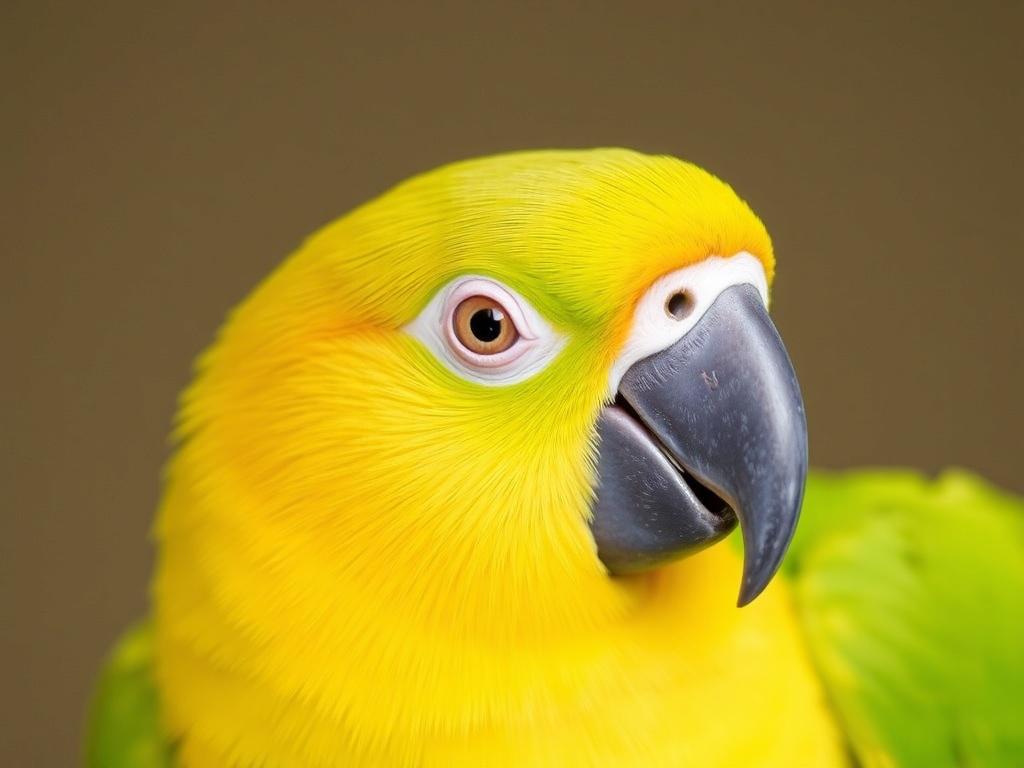
Some signs demand urgent attention:
- Severe crop stasis (crop not emptying for more than 12–24 hours)
- Marked respiratory distress, open-mouth breathing, or increased effort to breathe
- Severe lethargy, collapse, or inability to perch
- Rapid weight loss or visible weakness
- Evidence of systemic illness (multi-system signs or severe dehydration)
In these situations, prompt assessment and possible hospitalization can be lifesaving.
How to work with your veterinarian
A good partnership with your avian veterinarian is the best defense against Candida yeast infections in parrots. Here’s how to make that relationship effective:
- Bring a clear history: diet, recent antibiotics, hand-feeding practices, environmental changes, symptom timeline.
- Follow sample collection instructions carefully if the vet asks you to bring swabs or droppings.
- Ask about follow-up schedules, what to watch for at home, and when to return if things don’t improve.
- Discuss nutrition and probiotic options specifically for your bird species.
- If medication side effects occur, contact the clinic rather than stopping treatment abruptly.
A collaborative approach improves diagnosis accuracy and ensures safe, effective therapy.
Case examples (typical scenarios)
Here are two common, illustrative scenarios to help you recognize how candidiasis can present and be managed:
Scenario 1: The weaning cockatiel
A young cockatiel begins weaning, but the owner notices white, crumbly material in the crop and that the bird is reluctant to eat fresh food. The bird is active but has a slightly fluffed appearance. The owner brings the bird to the avian vet, who performs a crop swab and cytology showing yeast organisms. The vet prescribes an oral antifungal formulated for mucosal disease, recommends crop hygiene and a temporary shift to lower-sugar foods, and arranges a follow-up. The bird responds within days and completes a full course of therapy with no recurrence.
Scenario 2: The older African grey
An adult African grey being treated for a bacterial respiratory infection with prolonged antibiotics develops a foul-smelling crop and decreased appetite. The owner notices white plaques in the mouth. On veterinary visit, cytology confirms candidiasis. The vet prescribes an appropriate systemic antifungal, advises stopping unnecessary antibiotic therapy, and suggests probiotics to restore gut flora. The owner also cleans feeding items thoroughly and adjusts the diet. Recovery is slower but complete after several weeks of combined therapy.
These examples highlight typical pathways and the importance of veterinary-guided, multi-modal care.
Complications and prognosis
When detected early and treated appropriately, many cases of oral or crop candidiasis resolve well with little long-term consequence. Prognosis depends on the bird’s age, species, immune status, and whether underlying causes can be corrected.
Complications can include:
- Chronic or recurrent infections if predisposing factors persist
- Secondary bacterial infections
- Malnutrition and weight loss if the bird refuses food
- Systemic spread in severely immunocompromised birds
- Aspiration pneumonia if infected crop contents are inhaled
Close monitoring and addressing the root cause are key to preventing complications.
Research and future directions
Veterinary research continues to refine our understanding of avian microbiomes and the best strategies for preventing and treating fungal overgrowth. Areas of active interest include:
- Optimizing avian-specific probiotic formulations
- Refining antifungal dosing and minimizing side effects
- Developing rapid diagnostic tests for field use
- Understanding species-specific differences in susceptibility
As knowledge grows, expect more species-tailored prevention and treatment recommendations for Candida yeast infections in parrots.
Quick-reference summary table
| Topic | Key points |
|---|---|
| Common signs | White plaques, crop stasis, foul crop contents, reduced appetite, diarrhea |
| Risk factors | Antibiotic use, high-sugar diet, poor hygiene, stress, young or immunocompromised birds |
| Diagnosis | Clinical exam, cytology, culture, possible PCR and bloodwork |
| Treatment | Veterinary-prescribed antifungals, crop care, supportive nutrition, hygiene |
| Prevention | Judicious antibiotics, clean feeding tools, balanced diet, reduce stress |
A simple action plan for owners
If you suspect Candida yeast infections in parrots, here’s a straightforward checklist to follow:
- Observe and document symptoms (how long, what changed, feeding behavior).
- Contact an avian veterinarian for evaluation—don’t delay with persistent signs.
- Follow diagnostic recommendations (swabs, cytology, culture) so treatment is targeted.
- Implement the vet’s medication and crop-care plan exactly as directed.
- Sanitize feeding equipment and modify diet per veterinary advice.
- Monitor progress daily and keep follow-up appointments; report any worsening immediately.
This stepwise approach helps you act quickly and collaboratively with professionals.
Myths and misconceptions
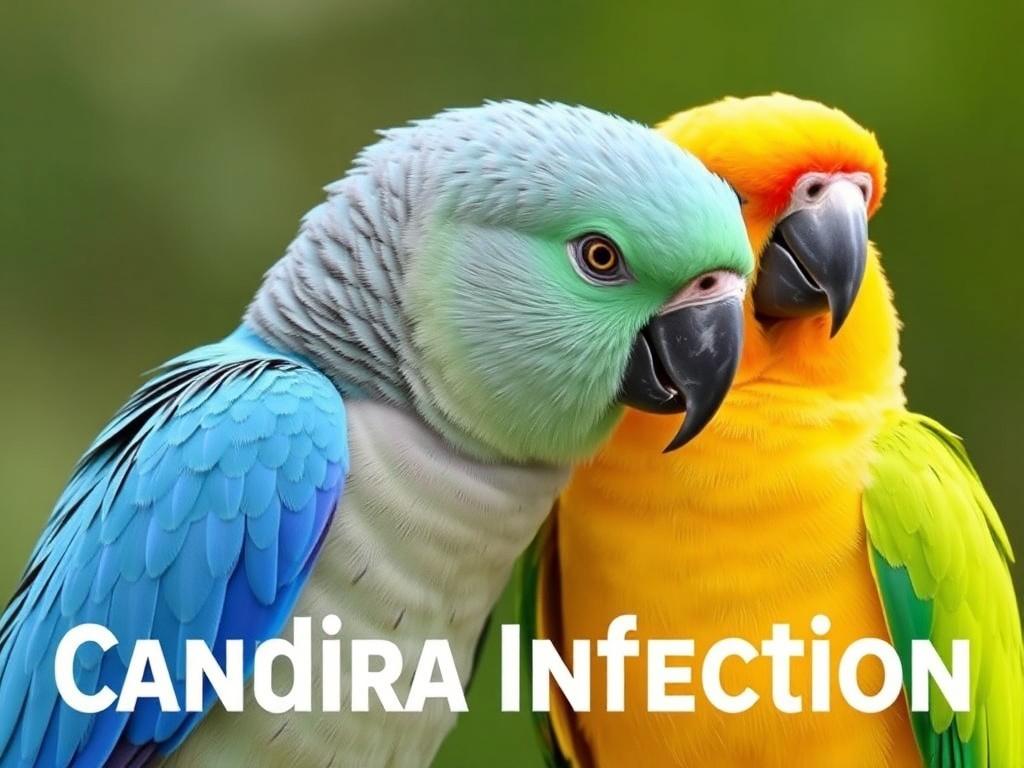
Separating fact from fiction can avoid harmful practices. A few common misunderstandings:
- Myth: Any white material in the mouth is candida. Fact: White matter can be food, urates, or bacterial. Cytology is needed for confirmation.
- Myth: Home remedies always work. Fact: Some home treatments can delay effective care; always discuss home remedies with a vet.
- Myth: Probiotics cure candidiasis. Fact: Probiotics may support recovery but are not a standalone cure for established infections.
When in doubt, seek professional guidance.
Resources and further reading
If you want to go deeper, look for trusted sources: avian veterinary textbooks, peer-reviewed journals on avian medicine, and guidance from specialty avian veterinary associations. Your avian veterinarian can also point you to species-specific resources and the latest evidence-based recommendations.
Conclusion
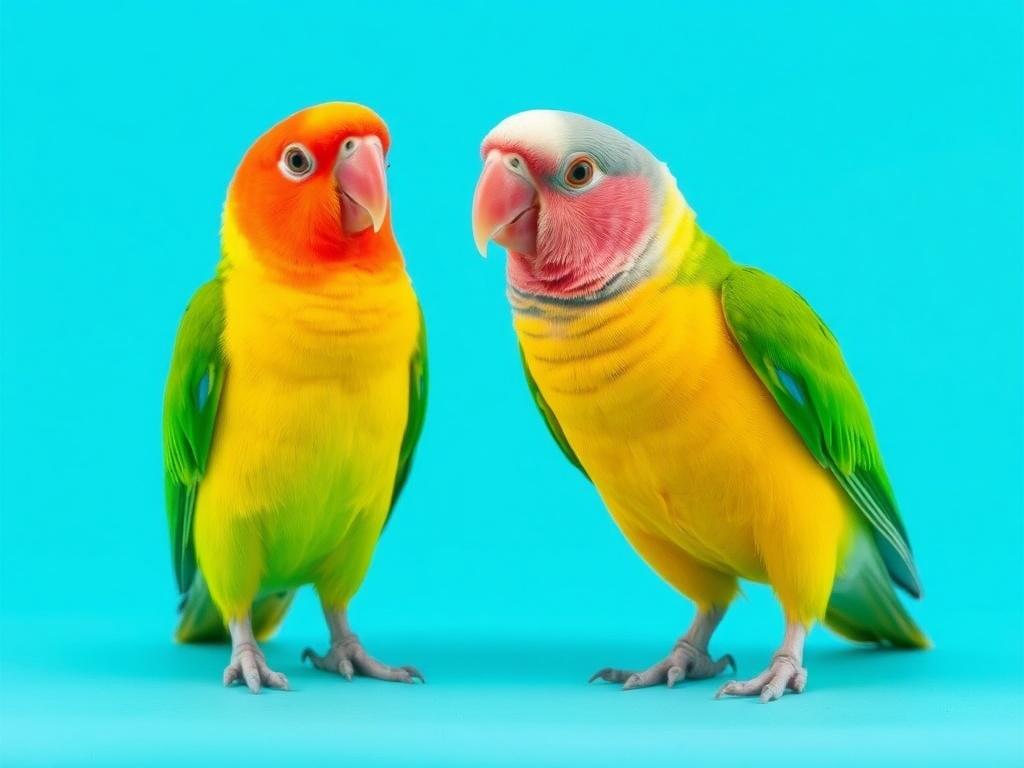
Candida yeast infections in parrots are common, often treatable conditions that demand timely recognition and veterinary-guided care. By knowing the signs, minimizing risk factors like unnecessary antibiotics and high-sugar diets, maintaining excellent hygiene with feeding gear, and working closely with an avian veterinarian, you can help your parrot recover quickly and reduce the chances of recurrence. Vigilance, sensible husbandry, and a partnership with your vet are the best defenses against this quiet but manageable foe.


